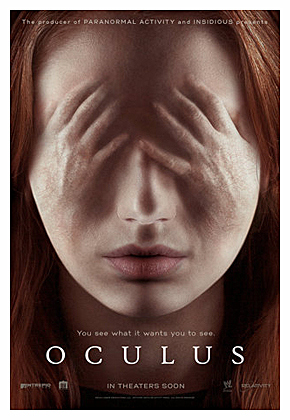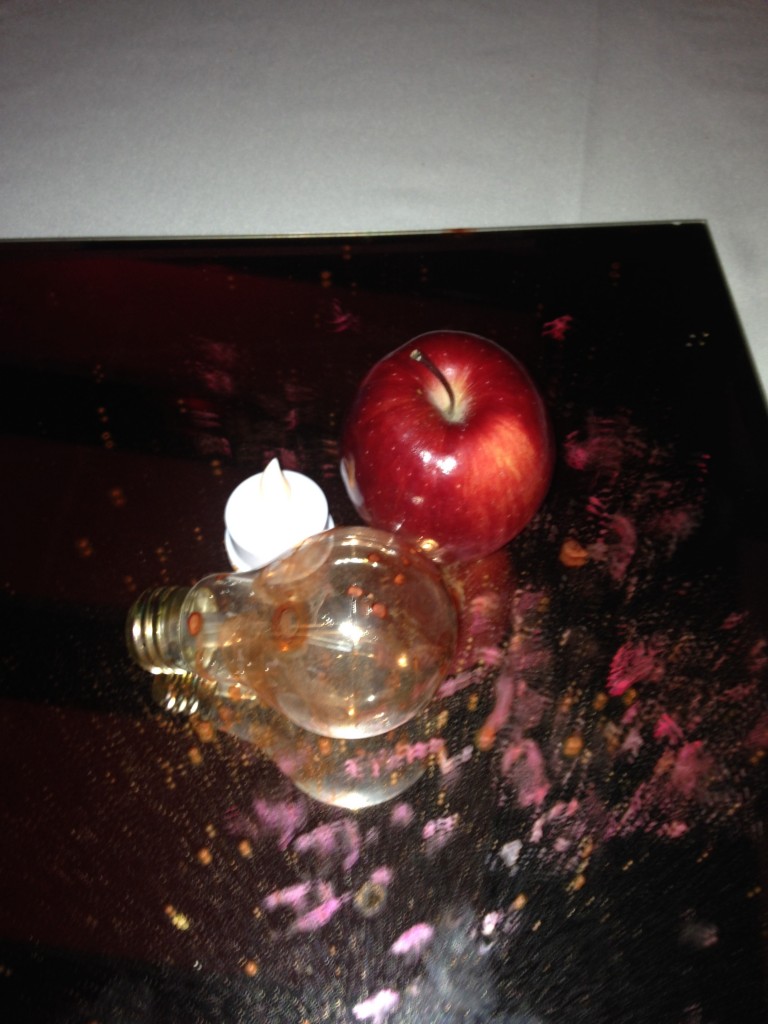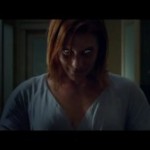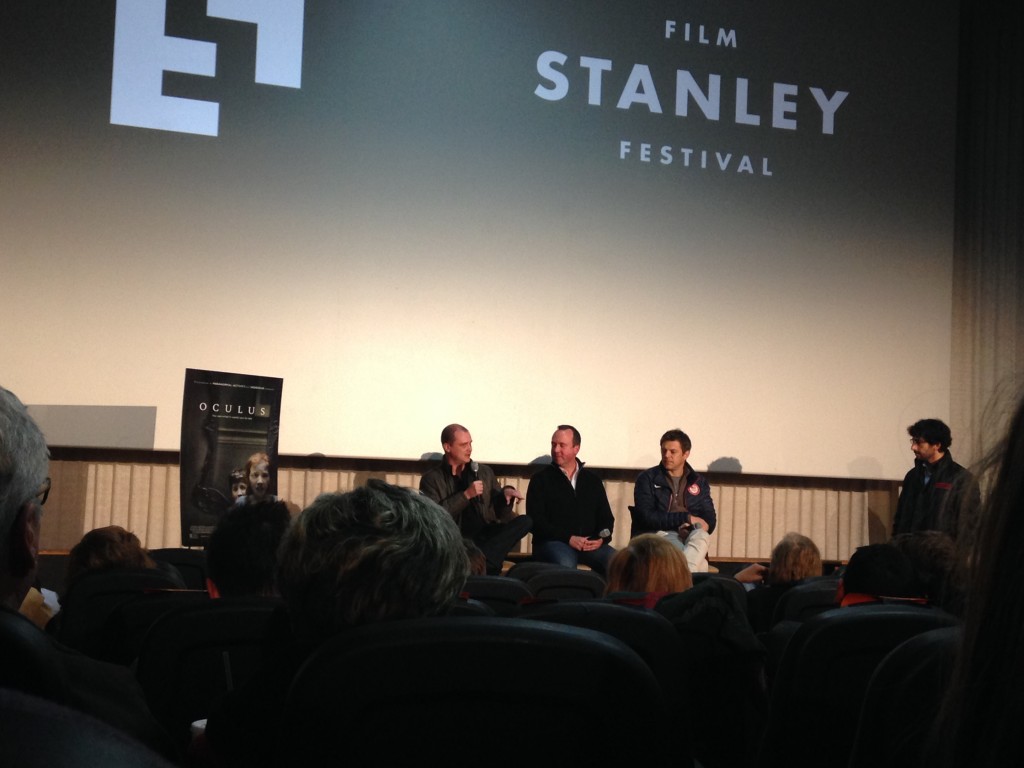Ten Bulletpoints re: Oculus
 1) This is probably from The Exorcist, but where I remember it from is Hysterical: one priest telling another not to listen, that the devil will lie to you. But then one of the Hudson brother’s pants are actually at his ankles. It wasn’t a lie, surprise. If you could turn that into a feature-length movie—and you can—then you’ve got Oculus, pretty much.
1) This is probably from The Exorcist, but where I remember it from is Hysterical: one priest telling another not to listen, that the devil will lie to you. But then one of the Hudson brother’s pants are actually at his ankles. It wasn’t a lie, surprise. If you could turn that into a feature-length movie—and you can—then you’ve got Oculus, pretty much.
2) Horror lately is really getting good at making its ghost-women kind of legit-creepy, yes? I thought Mama made its ghost-woman about as scary as could be—just visually disturbing, and moving something like that ghost-girl from Stir of Echoes—but this Pennywise-eyed ghost-lady in Oculus, she’s Mama‘s cousin, I’d say. Or maybe they’re all taking from Legion, what with the CGI-jaws kind of dropping inhumanly low? Not sure. But it works, and in the same way the Grays from X-Files did: by stranding us between recognition and revulsion. That face has all the same features, but it’s wrong, too, isn’t it? Isn’t it?
3) Mirrors are to horror as peanut-butter is to chocolate. First time a mirror in horror really got to me, I suppose, was Skeleton Key. But this mirror in Oculus, it’s more like the Erised Harry gets entranced by in The Sorceror’s Stone, yes? Or maybe a horror reference will be more on-point: Supernatural 1.19, the one with the haunted painting with a ba-ad history. But, tempting as it would be, Oculus never becomes an episode. It stays a feature—possibly a first installment, but still, the story’s not just fifty-two minutes inflated to nearly two hours. Or, it may be an episode for the mirror, but it’s a life’s culmination for the two main characters.
4) I had to look ‘oculus’ up. One definition is that circular or oval window up in attics. Which is a word I really could have used for Demon Theory. But, talking this movie, what’s a mirror if not a window to horror, yes? To another world, Kiefer. And, ‘oculus’ is the good title, here, as what I hear is ‘octopus,’ and then I see a Friday the 13th: the Series artifact with its tentacles in everybody’s head, which gets me on the path either to It or to that other-dimension brain Wong plants in John Dies at the End. And either of those are cool places to be, horror-wise.
5) A little ways into the movie—this could work as a spoiler, so be wary, here—I was completely dreading getting the origin story for/of this mirror, the same way we get, say, Francis Dolarhyde’s origin story. But Mike Flanagan understands that showing the source of the evil usually only serves to absolve that evil of its evilness. It makes the scary thing no longer responsible for its scariness. Instead of a bad guy, you’ve got a misunderstood victim whom it’s complicated to blame. And horror needs blame. It’s what justifies the violence. Wise move, story-wise.
6) I was also completely dreading the braiding of past and present that was going on. But again, the writing saves it: Oculus finally isn’t a ‘braided’ story or ‘parallel’ stories fleshing each other out or an understory and an over story, or a frame, or nested, or any of that: it’s very nearly a collision-course story. The past and the present, they start to collide, in interesting ways, in ways that escalate the narrative. I mean, sure, the structure is a little bit required because of all the exposition-handling difficulties a project like this entails. But the solution is pretty elegant.
7) At the afterparty at the very cool Stanley Hotel, this was the centerpiece for all the tables, just like it was the main set-piece for the movie:

8) In the talk after the screening, Flanagan mentioned how people he kept going to to get this movie made, they insisted on seeing it as found footage. Very glad he held out against that. Not that I resist found footage, necessarily, or on principle, but, for some of the horror gags to work here, we need to be in the character’s head, not looking through their lens.
 9) If you’re going to play the Eleanor role, which is the Jack Torrance role, then you’ve got to be able to sell crazy in what feels like a new way. Which Rory Cochrane does very convincingly. And Katee Sackhoff, whom I know only from Longmire, she’s completely excellent once the blood starts flying.
9) If you’re going to play the Eleanor role, which is the Jack Torrance role, then you’ve got to be able to sell crazy in what feels like a new way. Which Rory Cochrane does very convincingly. And Katee Sackhoff, whom I know only from Longmire, she’s completely excellent once the blood starts flying.
10) What finally makes Oculus work is that there’s two distinct and mutually exclusive reads. Which isn’t to say its vague or it doesn’t commit. Rather, it’s that good kind of ambiguous, that doubles meaning. But what really makes it work is that it makes us, leaving the theater, question our own perception just a little bit. The first mirror I saw after Oculus, I was a little nervous. And that’s exactly what you want after a movie like this.





